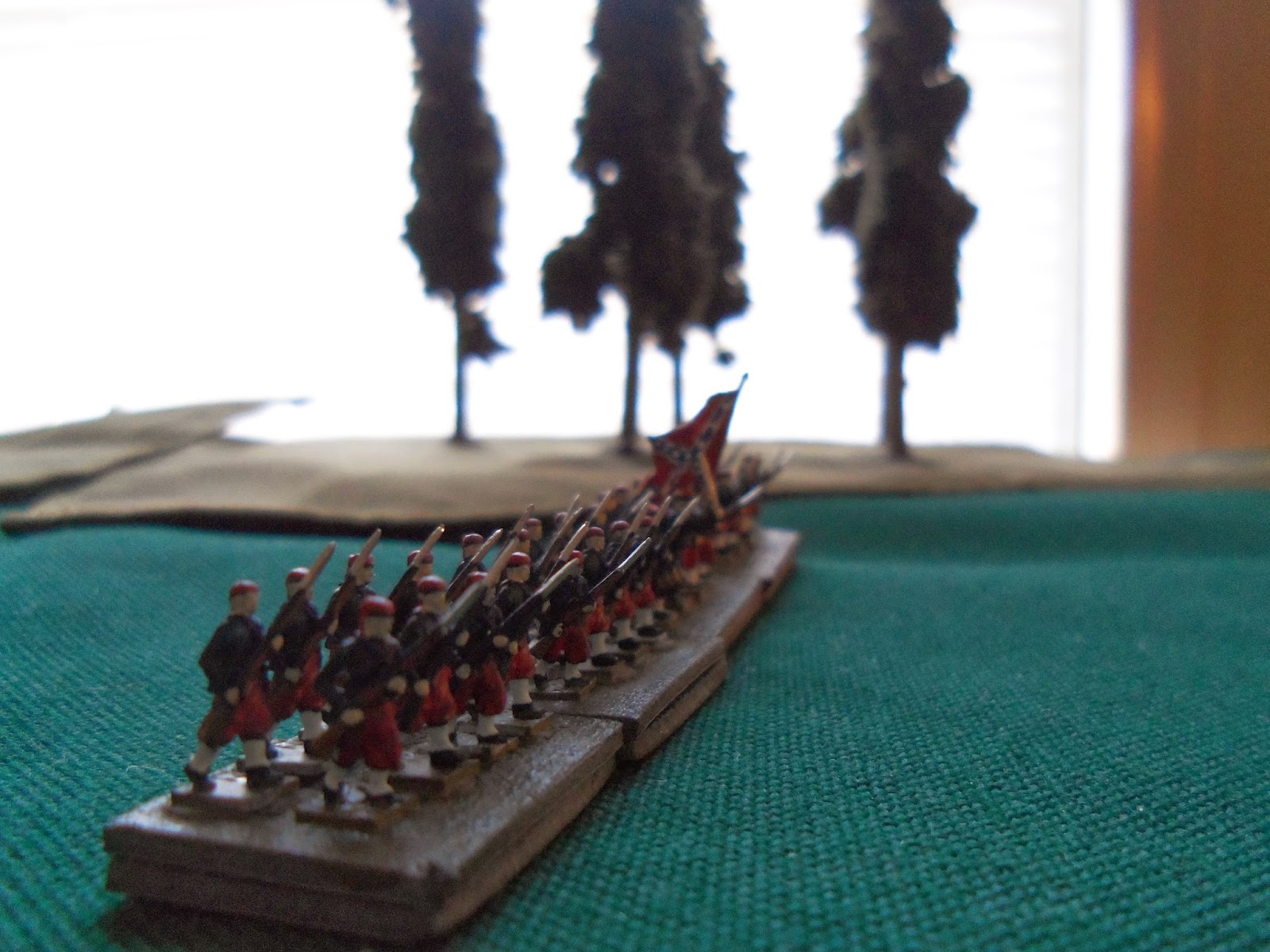There were many Zouave regiments that were organized from both North and South. They adopted the style and dress from the French North African–inspired uniforms. At this time it is clear to say that the United States Army uniform had a slight French influence. The Kepi is a perfect example of this. When the war broke out, the U.S. had more than 70 volunteer Zouave regiments throughout the war. In contrast, The Confederate Army put to the field mostly company sized Zouave units.
Approximately 25 Zouave companies served the southern cause.
Zouave units wore distinct uniforms consisting of but not limited to, Waist coats and brightly colored sashes. The head gear ranged from kepi's to Fezes or Turbans. The most distinctive part of the uniform were the baggy pants and leggings. This is not to be confussed with the Chasseur type uniform of long straight legged pants. The uniforms were made of mostly lightweight material and were trimed with colored strips along the edges of the coat.

This being said, They must have looked awe inspiring to people who witnessed their drill ceremony in person. A driving force in the American Zouave movement was a gentleman named Elmer Ellsworth who, with his company of Zouaves, traveled the United States before the War and performed demonstrations of their acrobatics and drill to the amazement of onlookers. Many people who witnessed these performances went on to form militia units as Companies of Zouaves.
American zouave units, at the beginning of the war, used light infantry tactics that emphasised open-order formations, with several feet between soldiers, rather than the customary close order, with its characteristic 'touch of elbows.' They moved at double time, rather than marching at a stately cadence, and they lay on their backs to load their rifles rather than standing to do so. To fire they rolled prone and sometimes rose on one knee.
Some of the most famous Zouave units of the war were White's Company B (the "Tiger Rifles") of Major Chatham Roberdeau Wheat's First Special Battalion, Louisiana Volunteers, aka "Louisiana Tigers". Also Louisiana State University College Football team is called "The Tigers."
Among the Louisiana Zouaves were the "Louisiana Tigers" or "Coppen's Zouaves." These names have been confused with "Louisiana Tigers at Gettysburg." Coppen's Zouaves were at Gettysburg, but they were not then known as "Louisiana Tigers." Captain White's Company B, "Louisiana Tigers", of Major Wheats's First Special Battalion, were not at Gettysburg, having been disbanded after Wheat's death at Gaines Mill in 1862.
New York and Pennsylvania produced the 5th New York Volunteer Infantry, "Duryee's Zouaves" (after its first colonel, Abram Duryee), the 114th Pennsylvania Infantry, "Collis's Zouaves" (after their colonel, Charles H. T. Collis) and the 11th New York Volunteer Infantry, "Fire Zouaves". The 11th New York was initially led by Col. Elmer E. Ellsworth, until his death in 1861. The 11th New York was badly mauled during the First Battle of Bull Run in July 1861.
10th New York "National Zouaves",
The 5th New York at Second Manassas
suffered the highest percentage of casualties in the shortest amount of time of any unit in the Civil War (of 525 men, approximately 120 were killed and 330 were wounded in less than 10 minutes).
The last Union casualty of the fighting in Virginia was reported to be a Zouave of the 155th Pennsylvania, killed at Farmville, Virginia on the morning of April 9, 1865.
Here are my Zouaves that I Completed this week.
23rd Pennsylvania Volunteer Infantry Regiment "Birney's Zouaves"
1st Louisiana Battalion "Coppens Zouaves"
Tomorrow I will be at Little Manassas Ga watching, and possibly participating, in the Reenactor Drills.













No comments:
Post a Comment
Note: Only a member of this blog may post a comment.